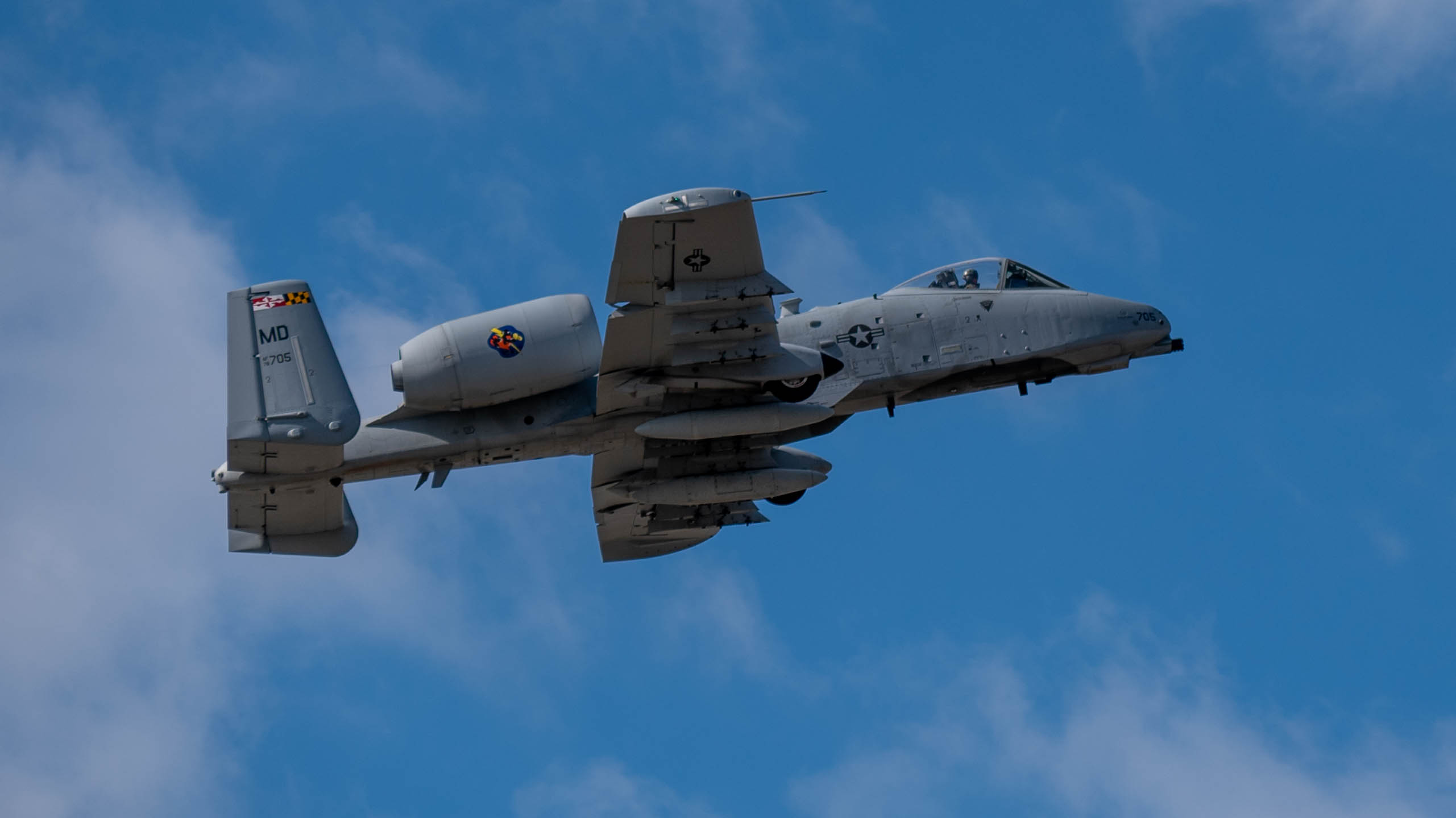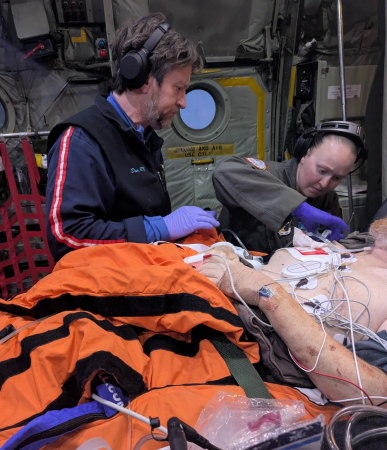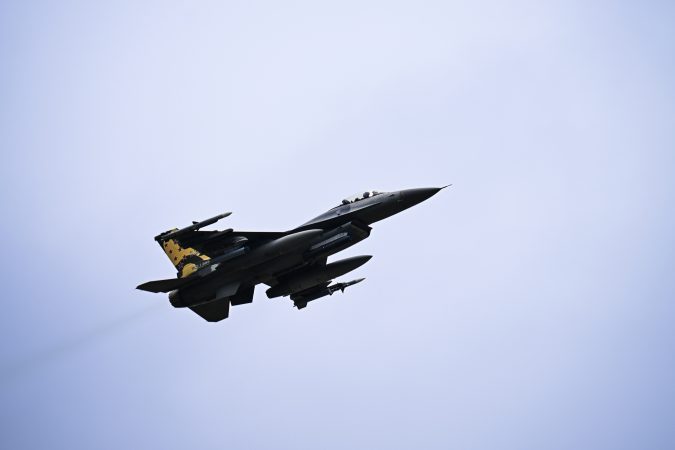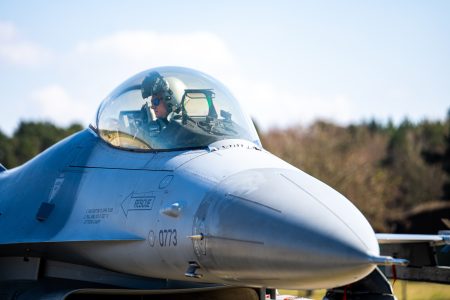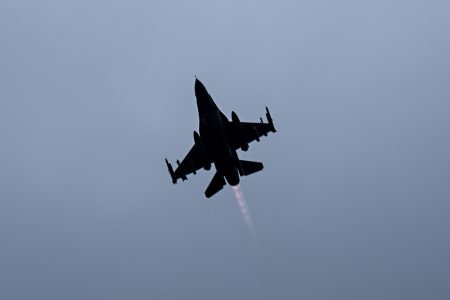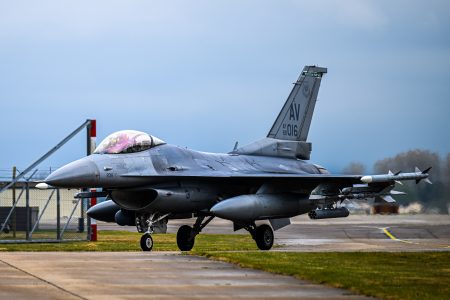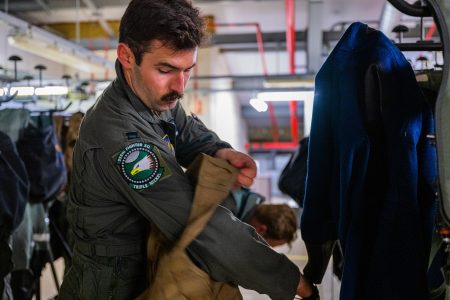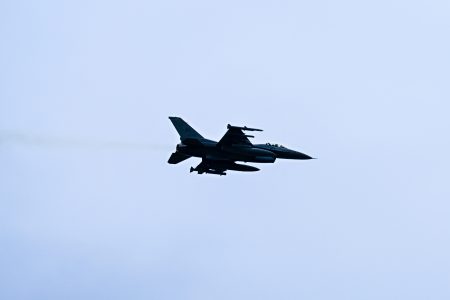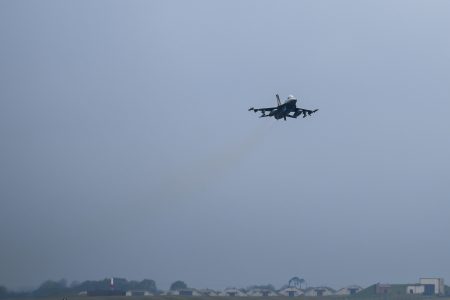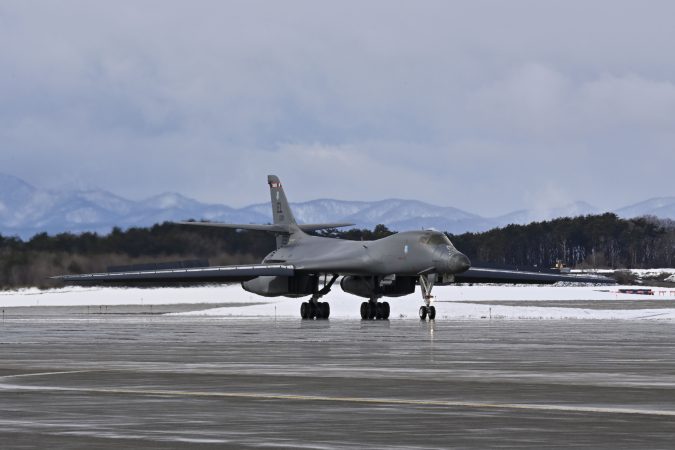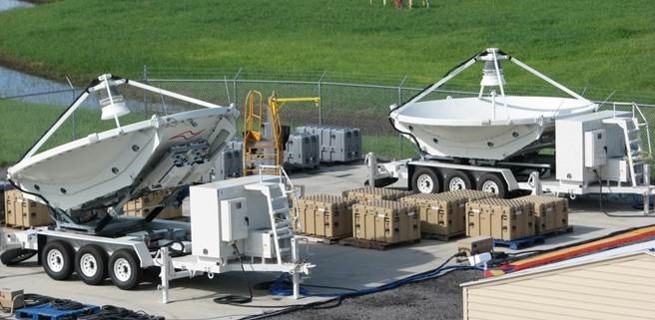The Maryland Air National Guard may be starting to say goodbye to its A-10 “Warthogs,” but it is not slowing down in the meantime, as it recently wrapped up a 11-day “combat readiness” exercise along the East Coast to prepare some of its Airmen for a planned deployment to the Middle East.
The exercise, which ran from April 1-11, included operations from Badin, N.C.; Tampa, Fla.; Savannah, Ga.; and Fort Meade, Md., a 175th Wing spokesperson told Air & Space Forces Magazine. Six A-10s from the 104th Fighter Squadron took part, as the wing’s Airmen conducted close air support operations and assisted naval forces in controlling simulated surface threats.
“I’ve seen a lot of success in our responses, especially at the tactical level,” Capt. Casey Smith, 175th Wing chief of plans and exercises, said in a release. “We had very fast response times, showcasing the strength of our training and our ability to adapt quickly under pressure.”
Airmen also practiced setting up and sustaining forward bases while establishing security perimeters. The Airmen focused on responding to scenarios that mirrored deployment conditions, including ground and cyber attacks.

“Some of our Wing staff are scheduled to be deployed in FY 2026,” the spokesperson said. “We’re partnering up with [the] Wisconsin Air National Guard to take on a mission for U.S. CENTCOM.”
U.S. Central Command oversees the military operations in the Middle East, and the Air Force has had a steady flow of deployments to the region following Israel’s war on Hamas began in October 2023.
That flow has increased as of late, as the Pentagon tries to counter Iranian-backed Houthi threats and to reopen shipping lanes in the Red Sea. The service has since deployed six B-2 stealth bombers to Diego Garcia and several A-10s from the Idaho Air National Guard in support of its campaign targeting the Houthis.
However, the Maryland ANG’s “tank-killer” aircraft won’t be part of the upcoming deployment; the spokesperson said that the 175th Wing will instead be deploying as part of a Expeditionary Air Base team, which focuses on consolidating leadership and support functions into cohesive teams to enable aircraft operations, instead of fulfilling those functions piecemeal.

Since 2023, the Air Force has been sending XAB teams of Airmen to the Middle East, as the service replaced its Air Expeditionary Wings with expeditionary air base units. The goal is to move to Air Task Forces, then Combat Wings, as Airmen spend more and more time training together stateside.
The first A-10 from the 175th Wing flew to the Boneyard at Davis-Monthan Air Force Base in Arizona last month, and by the beginning of fiscal 2026, the fleet will be nearly fully retired, as the wing plans to transition to a cyber mission without any aircraft, pending an environmental review this fall.
The decision, which leaves Maryland as the only state without a flying mission, has sparked strong pushback from Guard leaders and local politicians State leaders, who have vowed to push for the restoration of a flying mission. Progress, however, remains elusive.
